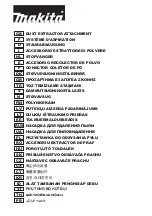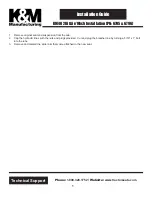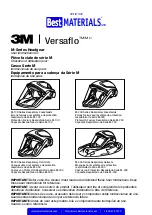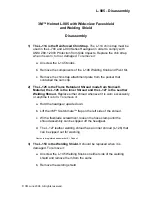
44
While your telescope requires little maintenance, there are a few things to remember that will ensure your telescope performs at
its best.
C
C
a
a
r
r
e
e
a
a
n
n
d
d
C
C
l
l
e
e
a
a
n
n
i
i
n
n
g
g
o
o
f
f
t
t
h
h
e
e
O
O
p
p
t
t
i
i
c
c
s
s
Occasionally, dust and/or moisture may build up on the mirrors of your telescope. Special care should be taken when cleaning
any instrument so as not to damage the optics.
If dust has built up on the mirror, remove it with a brush (made of camel’s hair) or a can of pressurized air. Spray at an angle to
the mirror for approximately two to four seconds. Then, use an optical cleaning solution and white tissue paper to remove any
remaining debris. Apply the solution to the tissue and then apply the tissue paper to the mirror. Low pressure strokes should go
from the center of the mirror to the outer portion.
Do NOT rub in circles!
You can use a commercially made lens cleaner or mix your own. A good cleaning solution is isopropyl alcohol mixed with
distilled water. The solution should be 60% isopropyl alcohol and 40% distilled water. Or, liquid dish soap diluted with water (a
couple of drops per one quart of water) can be used.
To minimize the need to clean your telescope, replace all lens covers once you have finished using it. Since the telescope tube is
NOT sealed, the cover should be placed over the opening when not in use. This will prevent contaminants from entering the
optical tube.
C
C
o
o
l
l
l
l
i
i
m
m
a
a
t
t
i
i
o
o
n
n
The optical performance of most Newtonian reflecting telescopes can be optimized by re-collimating (aligning) the
telescope's optics, as needed. To collimate the telescope simply means to bring its optical elements into balance.
Poor collimation will result in optical aberrations and distortions.
Before collimating your telescope, take time to familiarize yourself with all its components. The primary mirror is
the large mirror at the back end of the telescope tube. This mirror is adjusted by loosening and tightening the three
screws, placed 120 degrees apart, at the end of the telescope tube. The secondary mirror (the small, elliptical mirror
under the focuser, in the front of the tube) also has three adjustment screws. To determine if your telescope needs
collimation first point your telescope toward a bright wall or blue sky outside.
Never look directly at the sun with the naked eye or with a telescope (unless you have the proper solar filter).
Permanent and irreversible eye damage may result.
Aligning the Secondary Mirror
The following describes the procedure for daytime collimation of your telescope using the optional Newtonian
Collimation Tool (#94183) offered by Celestron. To collimate the telescope without the Collimation Tool, read the
following section on night time star collimation.
Содержание C10-NGT
Страница 62: ...62 APPENDIX E MAPS OF TIME ZONES...
Страница 63: ...63...
Страница 64: ...64...
Страница 65: ...65...
Страница 66: ...66...
Страница 67: ...67...
Страница 68: ...68...
Страница 69: ...69 3...
















































